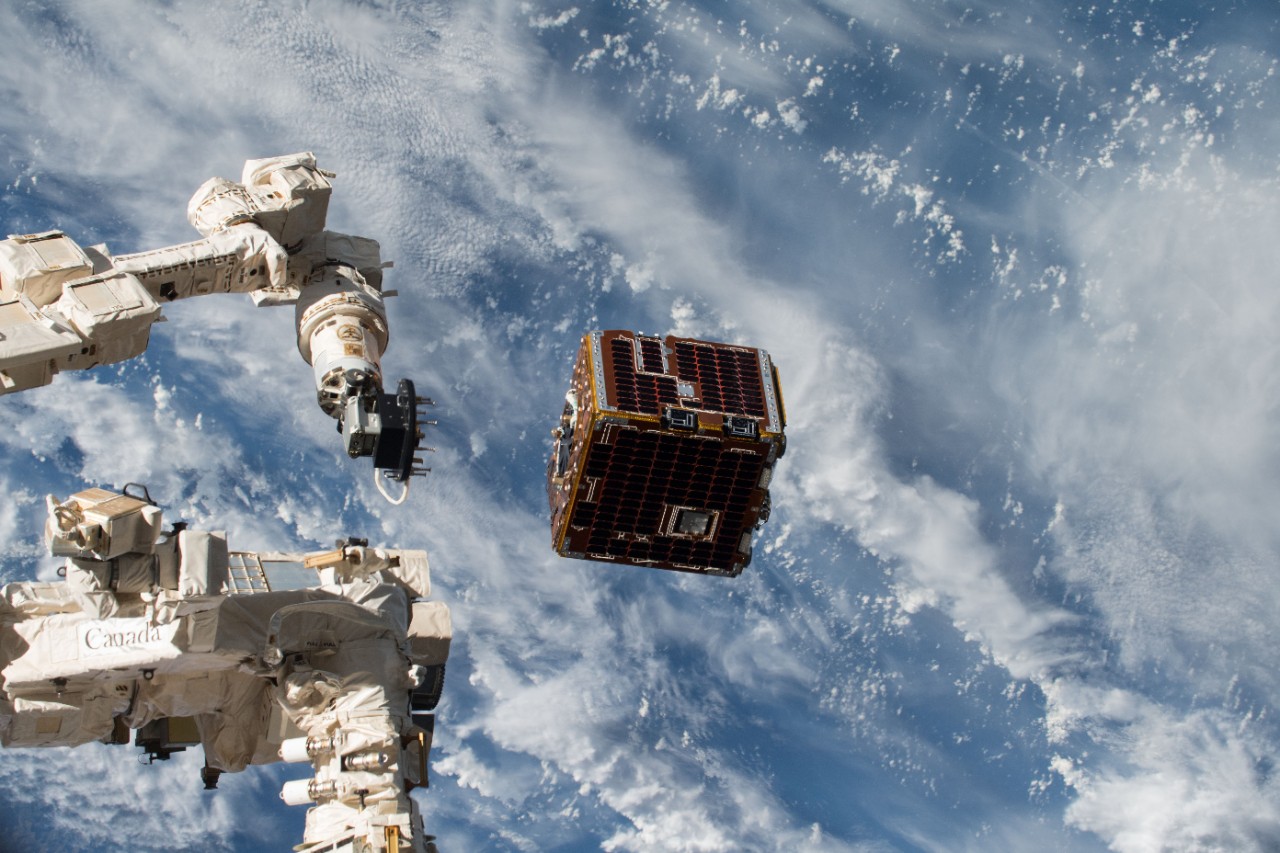
UC engineers develop navigation to avoid collisions
UC's new system gets us closer to robots that can fix satellites or spacecraft in orbit
What do you call a broken satellite?
Today, it’s a multimillion-dollar piece of dangerous space junk.
But a new collision-avoidance system developed by students at the University of Cincinnati is getting engineers closer to developing robots that can fix broken satellites or spacecraft in orbit.
UC College of Engineering and Applied Science doctoral students Daegyun Choi and Anirudh Chhabra presented their project at the Science and Technology Forum and Exposition in January in San Diego, California. Hosted by the American Institute of Aeronautics and Astronautics, it’s the world’s largest aerospace engineering conference.

Donghoon Kim
“We have to provide a reliable collision-avoidance algorithm that operates in real time for autonomous systems to perform a mission safely. So we proposed a new collision-avoidance system using explainable artificial intelligence,” Choi said.
He has been working on similar projects at UC for the past two years, publishing three articles in peer-reviewed journals based on Choi’s novel algorithms.
UC researchers tested their system in simulations, first by deploying robots in a two-dimensional space. Their chosen digital battlefield? A virtual supermarket where multiple autonomous robots must safely navigate aisles to help shoppers and employees.
“This scenario presents many of the same obstacles and surprises that an autonomous car sees on the road,” study co-author and UC assistant professor Donghoon Kim said.
“We can see unexpected human behaviors there and learn how well we can actually predict their follow-on motions,” Kim said. “Likewise, we can test how we can operate those robotic platforms autonomously without causing collisions.”
Collision avoidance is fundamental to perform coordinated tasks, but it’s not that simple.
Donghoon Kim, Assistant Professor, UC College of Engineering and Applied Science
Students built a prototype for design and testing with faculty in UC’s College of Design, Architecture, Art, and Planning and plan to test it under lab conditions.
But the collision-avoidance system works as well in a three-dimensional space for drones or flying cars. UC students demonstrated their three-dimensional project at the SciTech conference.
They plan to apply it to the arguably trickier environment of zero gravity in the frictionless vacuum of space. If an autonomous robot accidentally bumps a satellite that it intends to repair, the collision can send the robot, the satellite or both spinning wildly out of control.
“If you provide a small amount of input, the robot will move forward forever,” Kim said. “The environment is truly different, so control is critical. At the same time, we would like to deploy multiple spacecraft to support a satellite repair mission.”
Engineers envision deploying multiple autonomous robots to work on coordinated tasks such as repair, maintenance or assembly.
“Collision avoidance is fundamental to perform coordinated tasks, but it’s not that simple,” Kim said.
UC’s Department of Aerospace Engineering and Engineering Mechanics is among many academic, government and industry leaders working on this problem known as On-Orbit Servicing, Assembly and Manufacturing. These innovations hold the promise of extending the lifespan of satellites, making critical repairs to telescopes or improving the feasibility of interplanetary exploration.
Satellites represent about one-third of the $371 billion global space economy, according to the industry analyst firm BryceTech.
“This work is one of the hot topics right now,” Kim said. “The first step is avoiding collisions while deploying multiple agents in a designated space.”
UC’s system relies on a type of artificial intelligence called explainable AI. It uses fuzzy logic, a system that relies on degrees of truth rather than a binary right or wrong. The system allows engineers to understand the relationship between inputs and outputs through observed rules.
“Artificial intelligence has been applied in many different places, but not much in aerospace engineering. That’s because aerospace engineering is very conservative,” Kim said.
But Kim said that is likely to change as technology like the collision-avoidance system he and his students are developing becomes more proven.
“Emerging AI is physics-informed rather than relying solely on data,” Kim said. “If we know the physical behavior, we can use that as well as the data so we can get more meaningful information and a reliable AI model.”
Featured image at top: The International Space Station deploys a satellite into orbit. Photo/Drew Feustel/NASA

NASA launches the Webb space telescope. University of Cincinnati engineers are developing new navigation systems to help robots safely make repairs or service satellites in orbit. Photo/Bill Ingalls/NASA
Next Lives Here
The University of Cincinnati is leading public urban universities into a new era of innovation and impact. Our faculty, staff and students are saving lives, changing outcomes and bending the future in our city's direction. Next Lives Here.
Related Stories
RevolutionUC hackathon highlights student ingenuity at 1819
March 14, 2025
The University of Cincinnati’s 1819 Innovation Hub recently hosted three of the Queen City’s premier hackathons: RevolutionUC, MakeUC and UC Startup Weekend.
UC chief digital officer named 2025 Ohio ORBIE Awards Enterprise...
March 14, 2025
University of Cincinnati’s Vice President & Chief Digital Officer Bharath Prabhakaran was named 2025 Ohio ORBIE Awards Enterprise CIO of the Year. This award recognizes Bharath’s leadership in digital transformation, fostering innovation, and enhancing student success at the University of Cincinnati.
Golden Reunion a perfect opportunity to contemplate, celebrate...
March 14, 2025
We’re all familiar with one of time’s odd characteristics: Something may have happened ages ago, but it can feel like only yesterday. Over many years, things change a lot, or maybe not at all. This feeling is occurring now within the newest members of the UC Alumni Association’s Golden Bearcats Society, which honors those who have reached the half-century mark as University of Cincinnati graduates.
